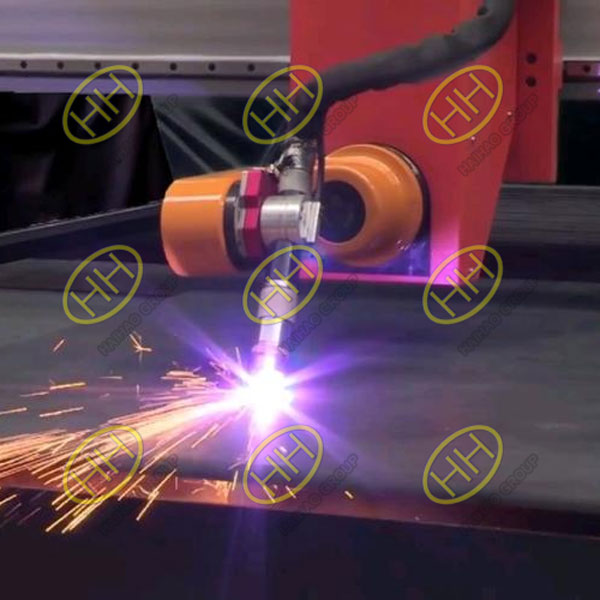Methods of bevel and edge thermal cutting
Beveling and edge thermal cutting are crucial processes in metal fabrication, especially for preparing metal components for welding. These methods are essential for creating the correct edge geometry to ensure proper weld penetration, minimize defects, and enhance structural integrity. Below are the commonly used methods for beveling and thermal cutting:
1.Oxidation Reaction Methods
Gas Cutting: This method utilizes a preheating flame to heat the cutting area while a stream of high-purity cutting oxygen is directed into the area. The reaction between oxygen and metal (such as iron) causes rapid oxidation of the metal. Simultaneously, the momentum of the high-speed cutting oxygen flow expels the slag, creating a cut seam. This method is primarily suited for cutting carbon steel, low-alloy steel, and titanium.
Oxygen-Fusion Gas Cutting: In this process, a flux (such as iron powder) is supplied to the cutting reaction zone via the oxygen stream. The combustion heat of the flux melts the high-melting-point metal oxides while the high-speed cutting oxygen flow removes the slag and molten metal, forming a cut seam. This method is mainly used for cutting high-chromium steel, chromium-nickel stainless steel, as well as foundry risers and steel slag.
2.Arc Methods
Air Carbon Arc Cutting: This technique uses the heat generated by a carbon electrode arc to partially melt the metal. Compressed air is then blown through the molten metal, removing it and forming a groove or cut seam. It is mainly used for opening bevels on welded joints, root cleaning of seal welds, and cutting out weld defects. It can also be applied to cut non-ferrous metals and their alloys.
MIG Arc Cutting: This method employs the heat from a gas-shielded arc to partially melt the metal, while the flow of shielding gas blows away the molten metal, creating a cut seam. It is primarily used for underwater metal cutting and for joint groove preparation.
Plasma Arc Cutting: Plasma arc cutting utilizes the high temperature of a plasma arc to partially melt the metal. The momentum of the high-speed plasma jet expels the molten metal, forming a cut seam. This method is suitable for cutting all types of metals and some non-metal materials.
3.Arc + Oxidation Reaction
Oxygen-Arc Cutting: This technique uses the heat from an electric arc to heat the cutting area while oxygen flow promotes combustion of the metal, expelling slag and molten metal to create a cut seam. Compared to gas cutting, this method is faster but produces lower-quality cut surfaces. It is mainly used for perforating metal and underwater cutting.
4.Light Energy Methods
Laser Cutting: This method focuses a small-diameter laser beam on the cutting area, causing the material to rapidly sublimate and melt, thereby forming a cut seam. It is mainly suitable for cutting thin metals and non-metal materials like ceramics and plastics.
These thermal cutting methods provide various techniques for achieving precise cuts in a range of materials, each with its specific applications and advantages.

